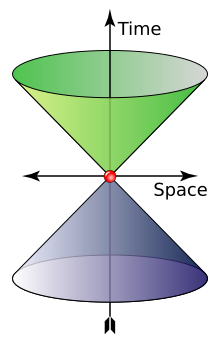The Sage of Main Street
Gold Member
Postclacs Demand InfallibilityBut then you are basically saying it moves instantaneously through that 4th dimension of space. So the movement through that space cannot be described. So adding the useless layer of the 4th dimension is not necessary and explains nothing, in this case.
Instantaneously or immediately is not a movement. I didn't "basically say" any such thing. In defense of the Quantum Quacks you worship, you have to twist any objections into meaninglessness.
Immediately literally means "no middle." Why would I say it moves immediately through the middle of its course?
Underlying (hypostasis) the 3 dimensions the maximum velocity is a light-year every three minutes. A dishonest objection, which I've actually heard from professor-lovers, is, "How can a year be three minutes?"
Last edited:







